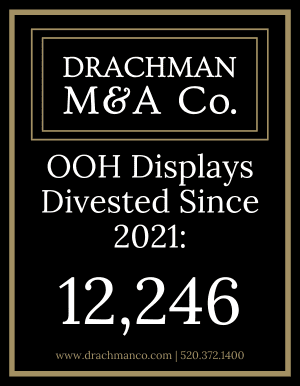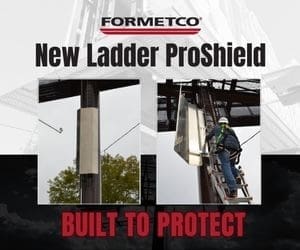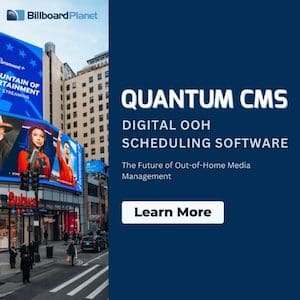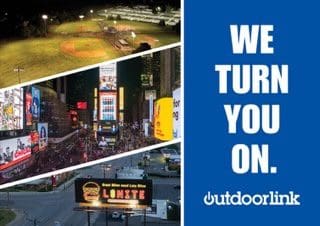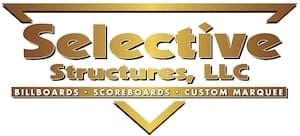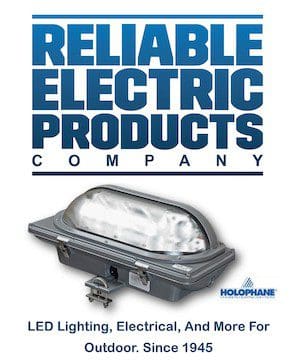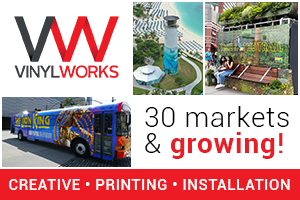
Insider is running a series of interviews discussing ways to insure that you don’t drop the ball in the transition from winning the sale to producing the billboard ad. Last week we talked with Debbie Collvins of Billboards, Etc. This week we talk to Greg Callaham of Greg Callaham Design.
What common mistakes do billboard companies and clients make when dealing with a billboard designer?
The most common challenges I encounter are low resolution images and incomplete information.
When the sales rep walks into the advertiser’s business, the advertiser sees the rep as an expert on outdoor advertising. So be the expert. Know the art specs as well as you know the board sizes you’re selling. You should know as much about vector art and 300 dpi as you do about a 10×30 or 14×48. The advertiser doesn’t know why a low resolution logo the size of a postage stamp from their web site is not going to work well when enlarged it to the size of a bread truck.
Vector art is the digital file in which the logo was actually created, NOT PLACED. This format eliminates the chances of the advertiser’s logo pixelating (becoming very blurry or looking like it’s made out of Legos) when enlarged for use in the outdoor ad you’re selling them.
A similar concept applies to photography. An image from the web site isn’t going to enlarge well. Pixels are data. The more data we have the better it will look when it’s 14 feet tall. So photos should be at least 300 dpi resolution AND a large physical size. I push for 8″x10″ so the photo file contains enough data to hold the resolution when enlarged on the board. This is why it’s so important for sales reps to understand art specs. They are tools for positioning yourself as an expert on outdoor advertising and educating the advertiser. Establishing that fact allows you and I to guide the advertiser toward a more effective ad, resulting in a better ROI. We shorten your selling cycle on this contract and make the renewal much easier.
It is also critical to give your designer complete information, starting with board size. It sounds simple, but sometimes that is forgotten or not confirmed at the time the art request is submitted. That’s understandable. We’re all busy and sometimes ride sheets haven’t been updated from a recent rebuild. But this information will directly impact the designer’s ability to schedule your project and the layout of the ad. It’s not easy to change a 14×48 into a 12×24 while keeping the project on schedule. This is also applicable to ad content. Please don’t simply hand your designer the advertiser’s business card. Have a list of questions to ask the advertiser so you have answers for you designer. It usually takes less than five minutes to complete such a list, and that five minutes can keep your project from falling behind schedule while your designer gets answers to these questions or works through unnecessary revisions.
What should be the key questions asked to a client concerning billboard art work and creative?
The most important question I ask advertisers is, “What is the ONE thing you want your target audience to know about your business?” I usually get the elevator pitch involving multiple features and benefits. Then I ask the question again. We’ve got 5 to 10 seconds to catch a prospects eye. We don’t have time for a long headline, five bullet points, a photo of the front of their building, a directional, street address, web address, phone number, and logo. That’s a magazine ad. So the most important questions is, “What is the ONE thing you want your target audience to know about your business?” It makes a person stop and think. And that, my friends, is exactly what we want the advertiser to do. Stop and think about their ad. The answer to this question is the foundation on which we build their selling message.
Other important questions to ask an advertiser get into the nuts and bolts of actually building the ad:
Do you have vector art of your logo? If not, who does?
Do you have high resolution photography you want to use on the board? May we suggest stock photography?
Do you own the copyright to all imagery you want to use on the board? (Just because it showed up in a Google search does NOT mean it’s free to use.)
What are the best ways for the sales person to take that info and pass it to the graphic designer?
I’m believe in taking good notes. I know it can feel like it slows down a conversation, but do it anyway. Sales reps who take good notes receive layouts that are closer to the advertiser’s expectations on the first proof, have fewer revisions, and, therefore, process more contracts than those who do not. You are the eyes and ears of your designer when you are in front of the client. This is where you have a direct impact on and responsibility for getting good info for your teammate in the art department. If you get them excellent information, they will hand you excellent design. If you don’t…well, the phrase “garbage in, garbage out” fits nicely.
[wpforms id=”9787″]
Paid Advertisement
